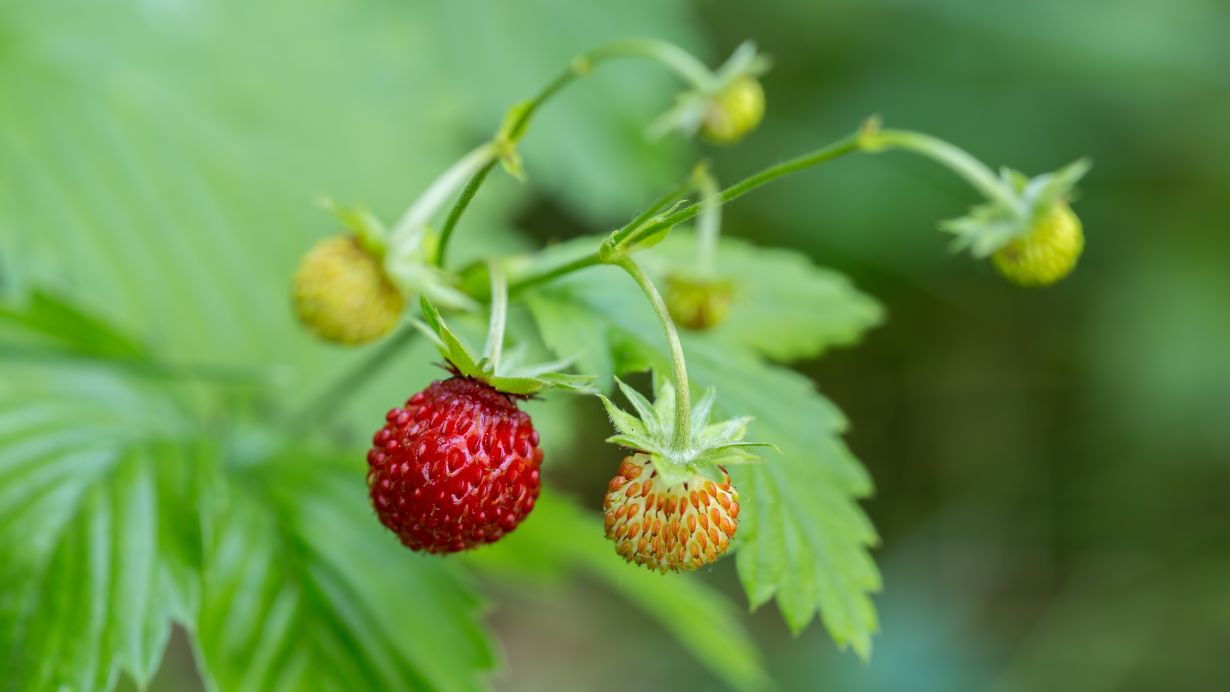
Climate change is shifting the seasons, pushing crop plants to their limits. For example, sudden frost episodes in late spring can be detrimental to strawberries in their bed. Wild species, on the other hand, are often more resilient. Researchers at Karlsruhe Institute of Technology (KIT) and partners have decoded the cold reactions of woodland strawberries to enable the cultivation of more resilient varieties. They have published their findings in the Journal of Experimental Botany journal (DOI: 10.1093/jxb/erae263).
In the past, crops were primarily bred for productivity - at the expense of resilience. "Climate change makes it more difficult even for modern agriculture to compensate for the lack of resilience found in crops caused by fertilization and field maintenance," says Professor Peter Nick from KIT's Joseph Gottlieb Kölreuter Institute for Plant Sciences. "Wild plants and their genetic resilience factors are therefore becoming increasingly important for agriculture." His team investigated the cold resistance of woodland strawberries (Fragaria vesca) and thus laid the foundations for more resilient breeding lines in the future. For their research, the scientists resorted to the German Gene Bank for Crop Wild Relatives.
Causes of Resilience Decoded
In a comparative study, the scientists first identified cold-tolerant and cold-sensitive genotypes of woodland strawberries. A pair of genotypes, contrasting in their tolerance to cold stress, made it possible to uncover physiological, biochemical, molecular, and metabolic processes associated with cold tolerance. "We were able to observe specific differences in how they handle cold stress," says Nick. On the one hand, these are differences that have already existed before the stress sets in. "Certain cold-regulated genes are much more pronounced in the cold-tolerant genotype. These provide for the production of proteins that act as the cell's own antifreeze and protect the membrane from freezing damage," explains the botanist. On the other hand, there are differences that are caused upon cold stress only. As Nick explains, this is at first just a physical signal for the plant: "Cold stiffens the membrane of the plant cell, which has an effect on transport processes and enzyme activity." This physical signal must then be effectively converted into a chemical signal and reach the cell nucleus. "We have now identified the genes that are particularly important in this cold-signal cascade and ensure the successful response of the robust woodland strawberry," says Nick.
Cold-resistance to be Transferred to Cultivated Strawberries
The findings of the study are of great value to agriculture. "In the future, we will be able to use these results for the cultivation of strawberries that produce more of the antifreeze protein, for example. There is no need for genetic engineering, but we can use conventional cross-breeding. Backed by our molecular knowledge, we will be able to quickly select suitable plant individuals. For Nick, the study also demonstrates the importance of gene banks: "The example of the woodland strawberry shows that analyzing wild species can help us make agriculture more sustainable and resilient in the future."
Original publication:
Adnan Kanbar, Christoph Hubertus Weinert, David Kottutz, La Thinh, Eman Abuslima, Farida Kabil, Mohamed Hazman, Björn Egert, Bernhard Trierweiler, Sabine Emma Kulling, Peter Nick: Cold tolerance of woodland strawberry (Fragaria vesca) is linked to Cold Box Factor 4 and the dehydrin Xero2. Journal of Experimental Botany, Volume 75, Issue 18, 27 September 2024. DOI: 10.1093/jxb/erae263 .
Being "The Research University in the Helmholtz Association", KIT creates and imparts knowledge for the society and the environment. It is the objective to make significant contributions to the global challenges in the fields of energy, mobility, and information. For this, about 10,000 employees cooperate in a broad range of disciplines in natural sciences, engineering sciences, economics, and the humanities and social sciences. KIT prepares its 22,800 students for responsible tasks in society, industry, and science by offering research-based study programs. Innovation efforts at KIT build a bridge between important scientific findings and their application for the benefit of society, economic prosperity, and the preservation of our natural basis of life. KIT is one of the German universities of excellence.






